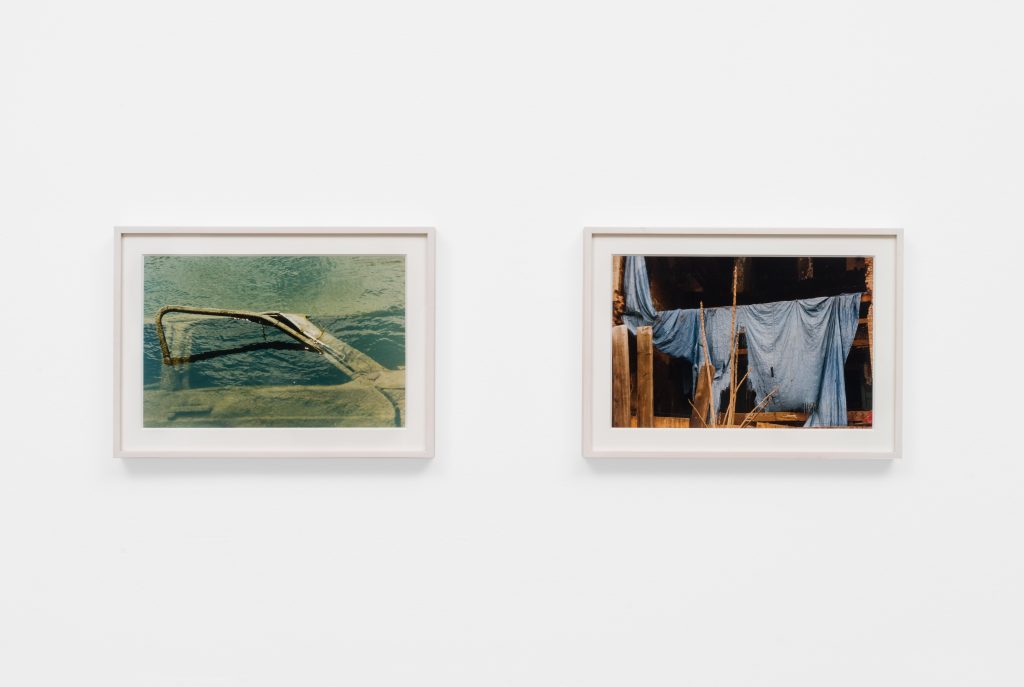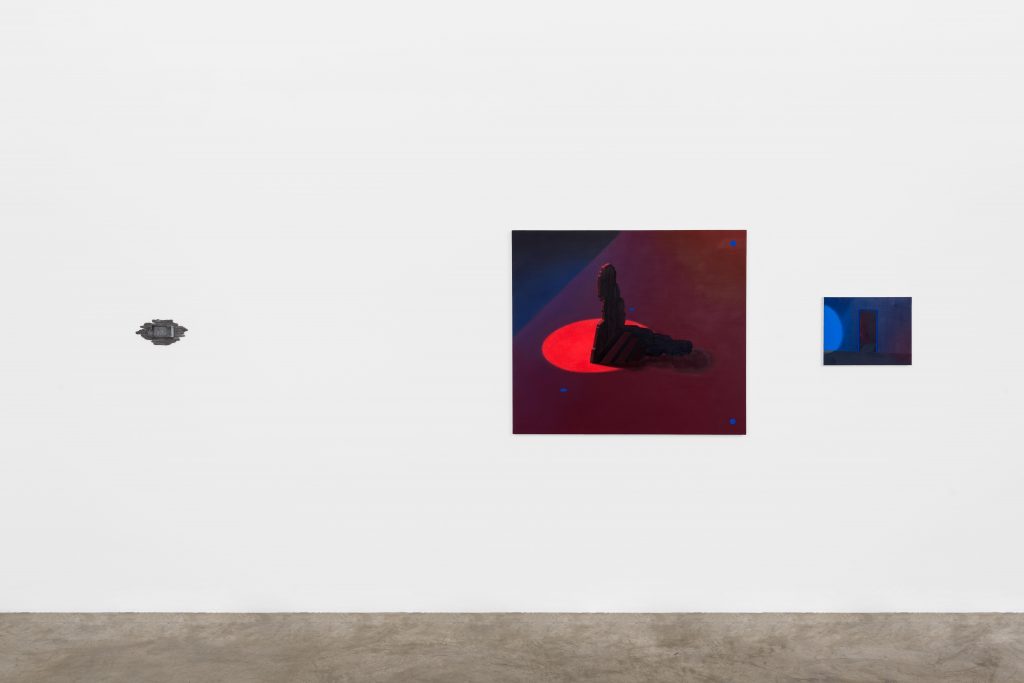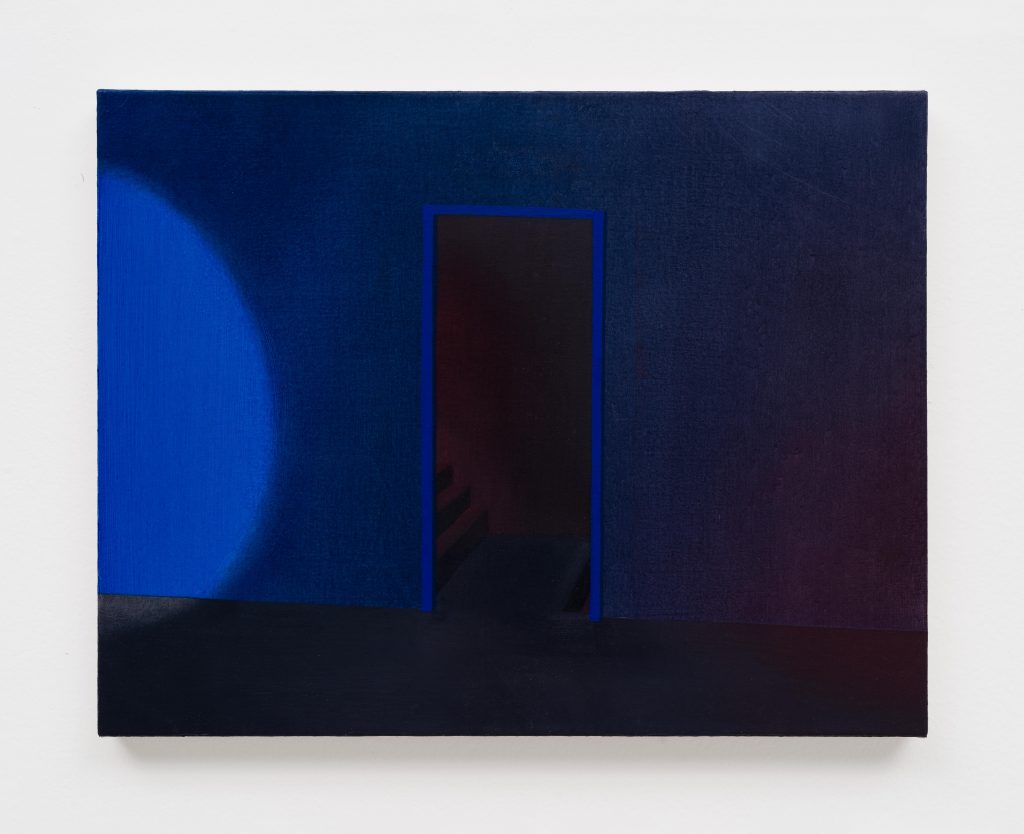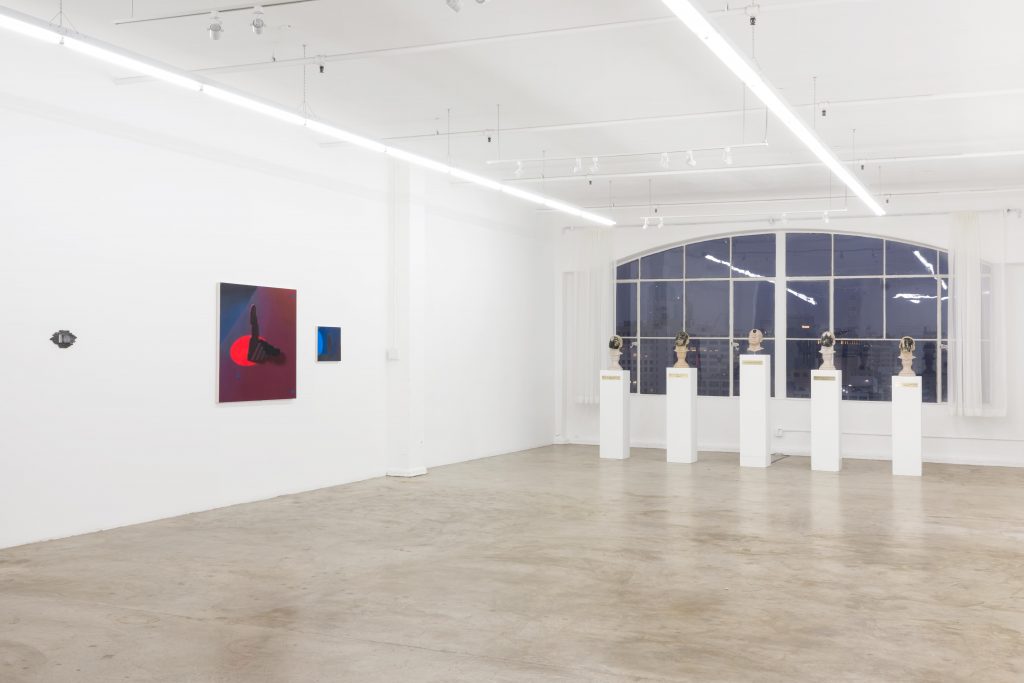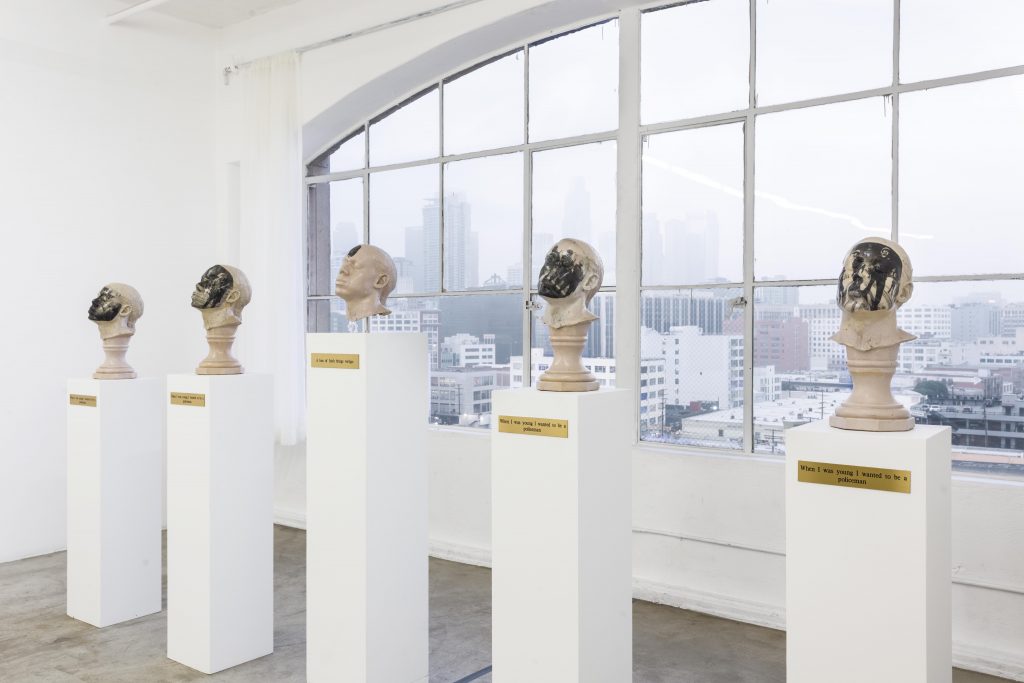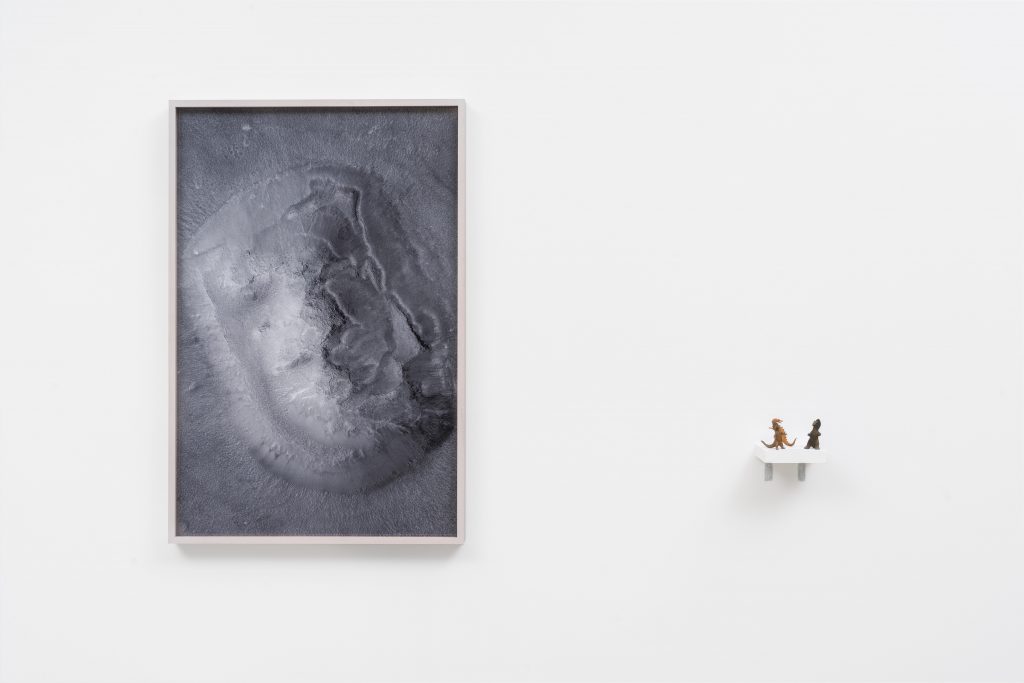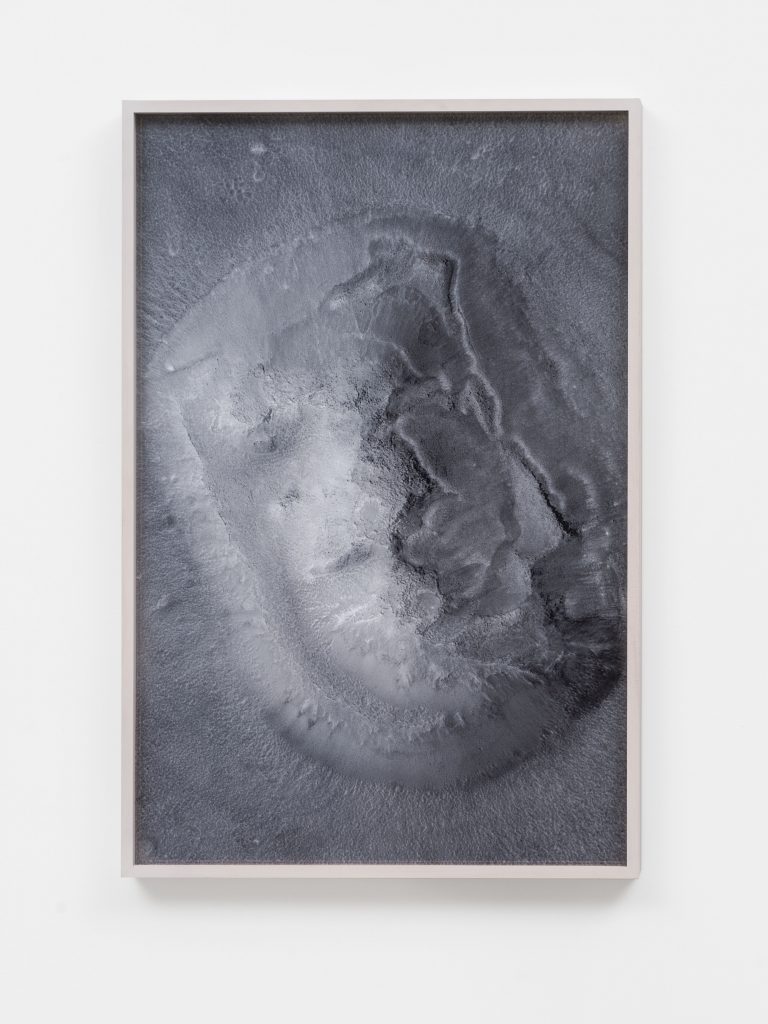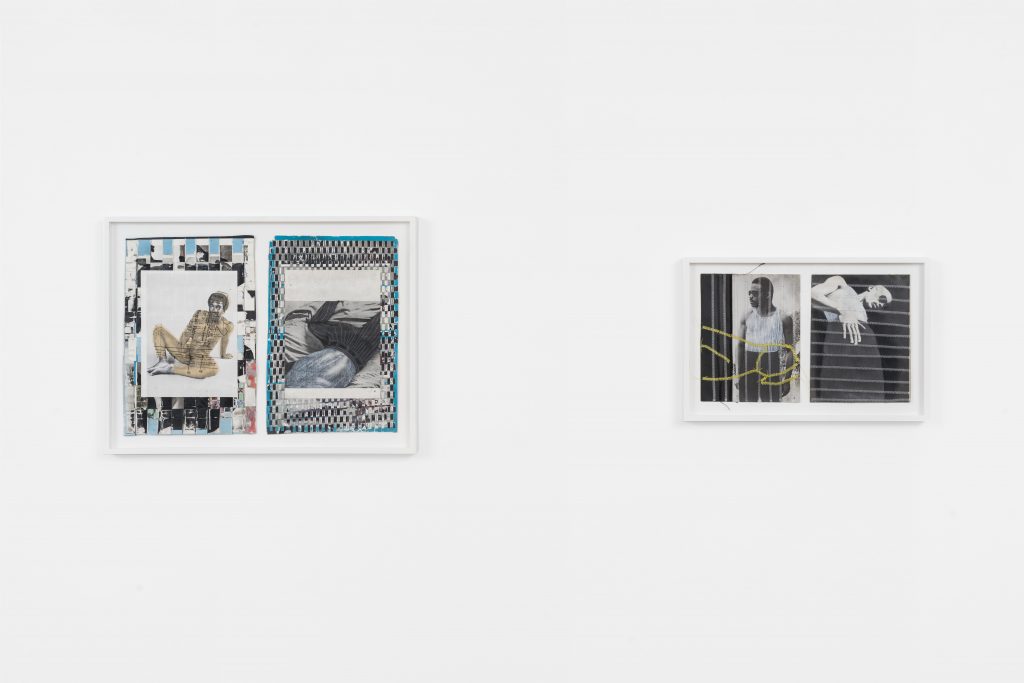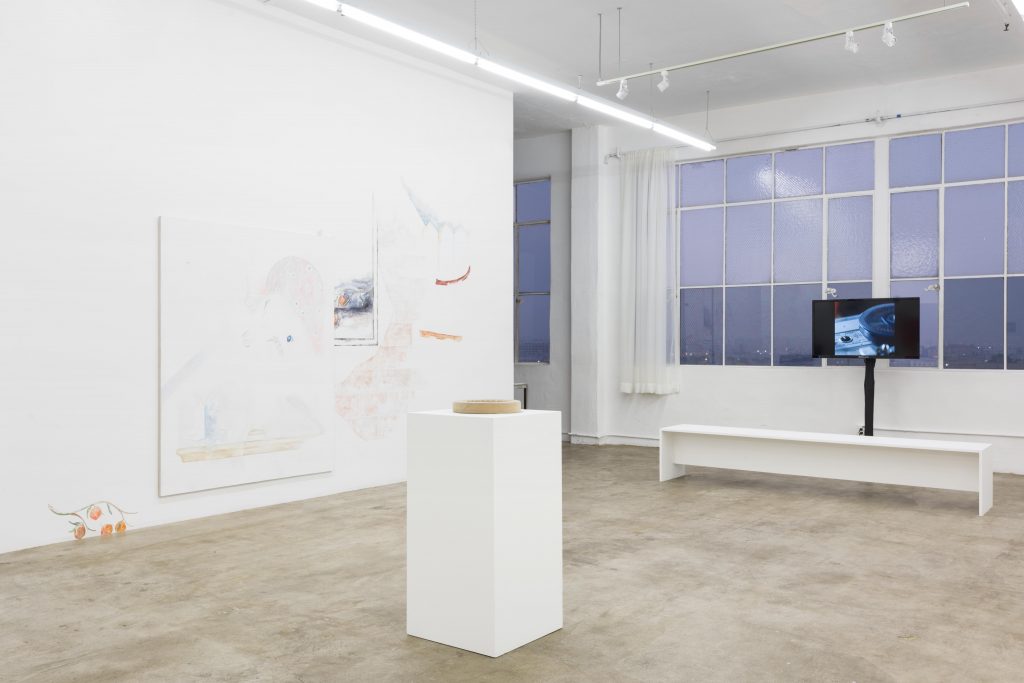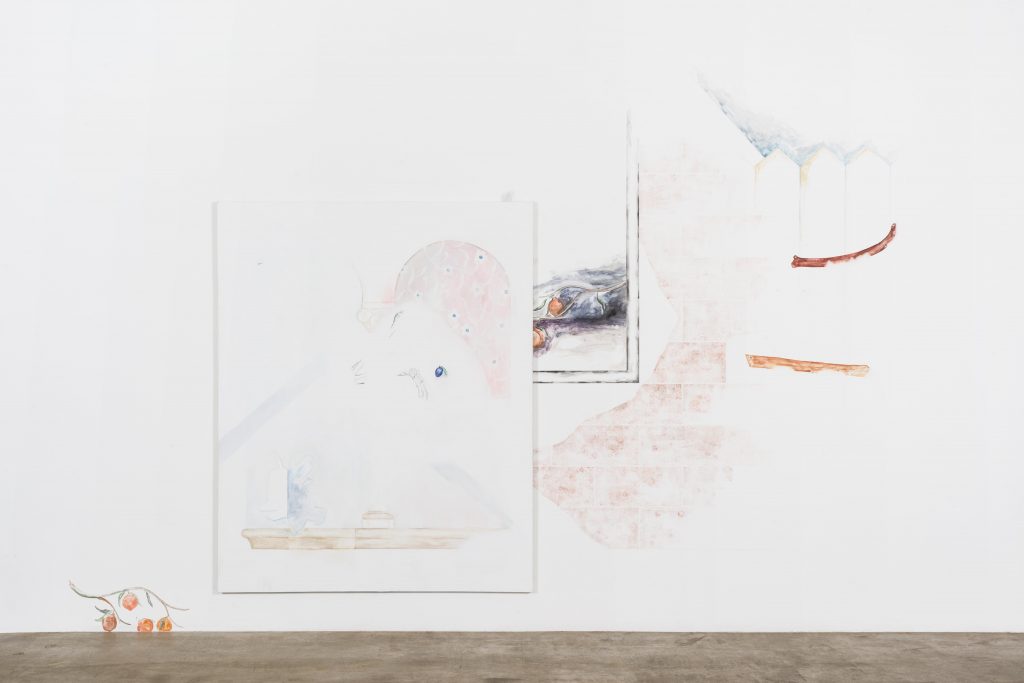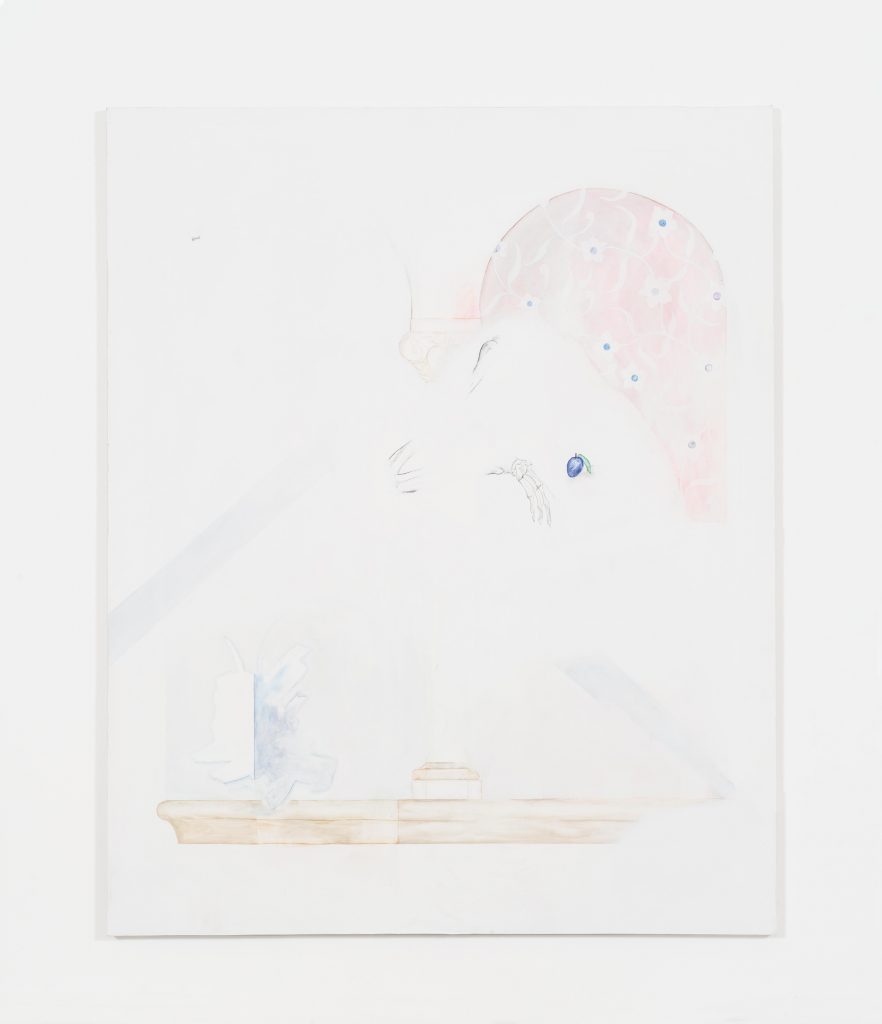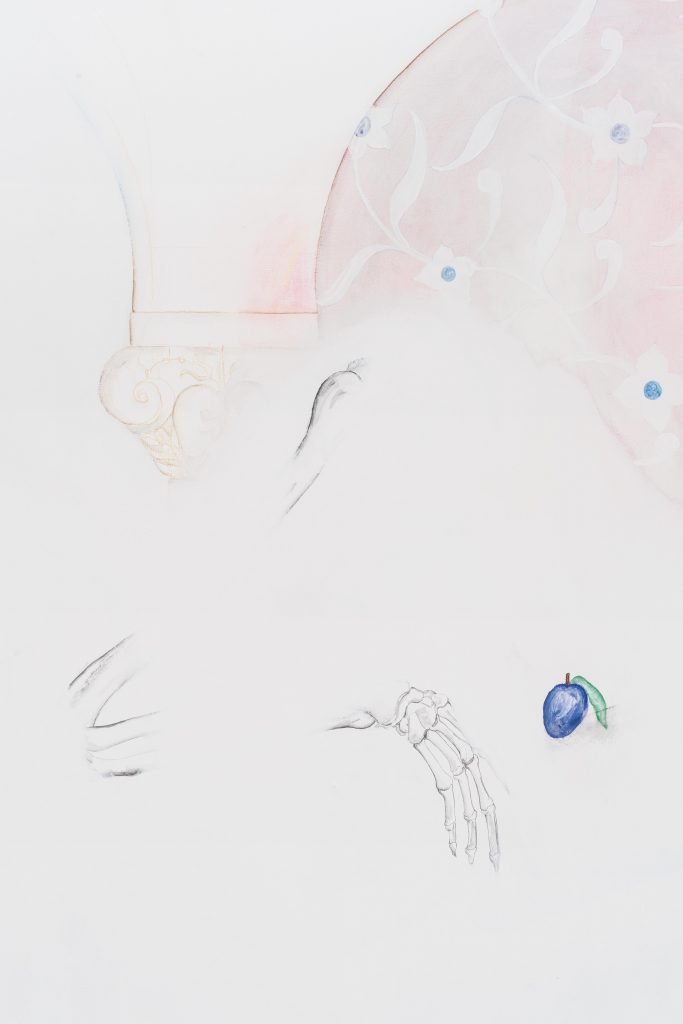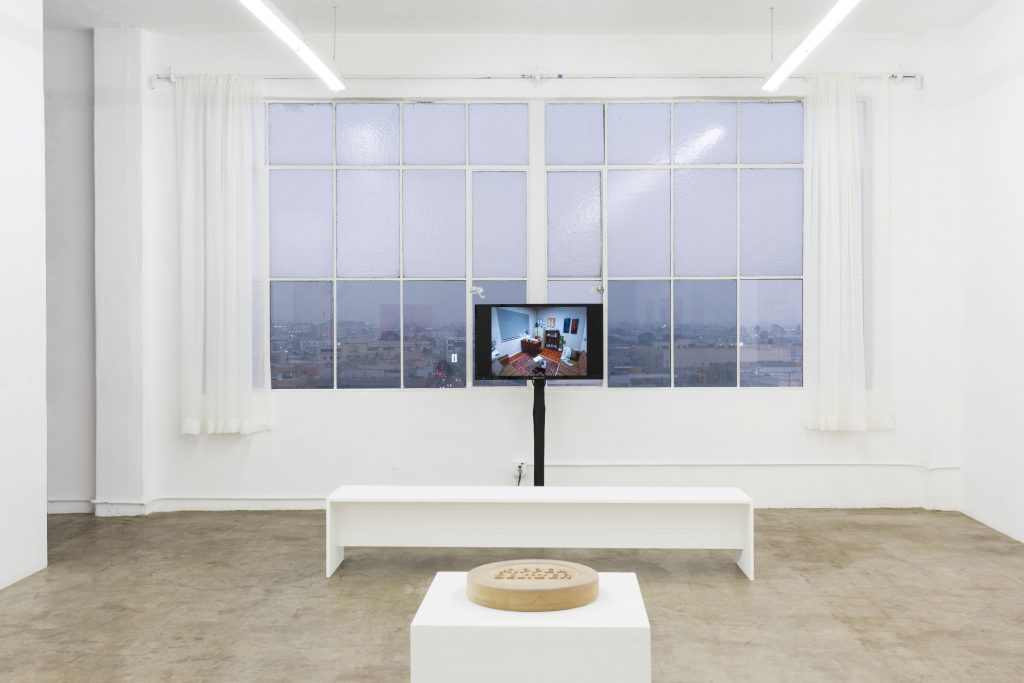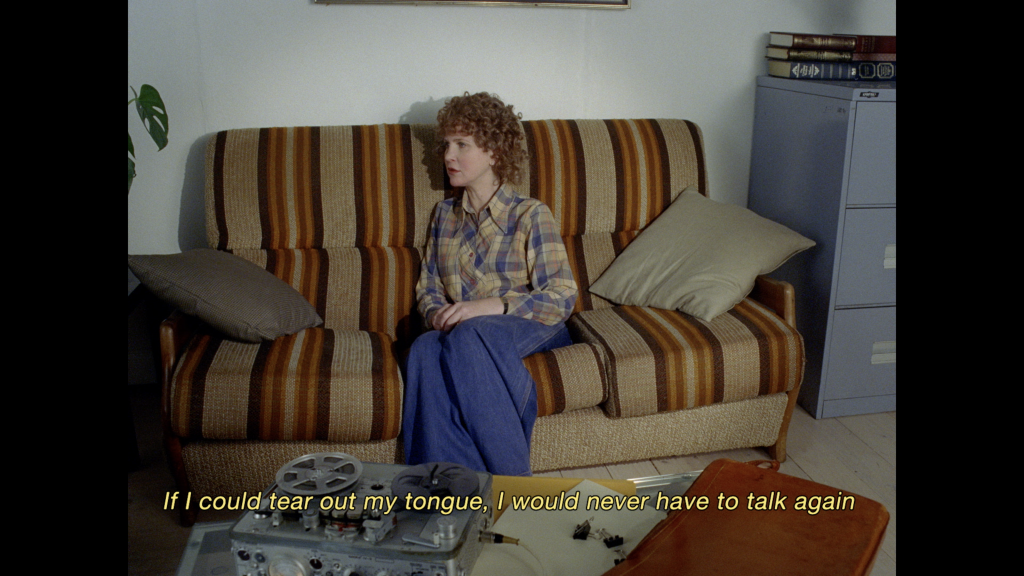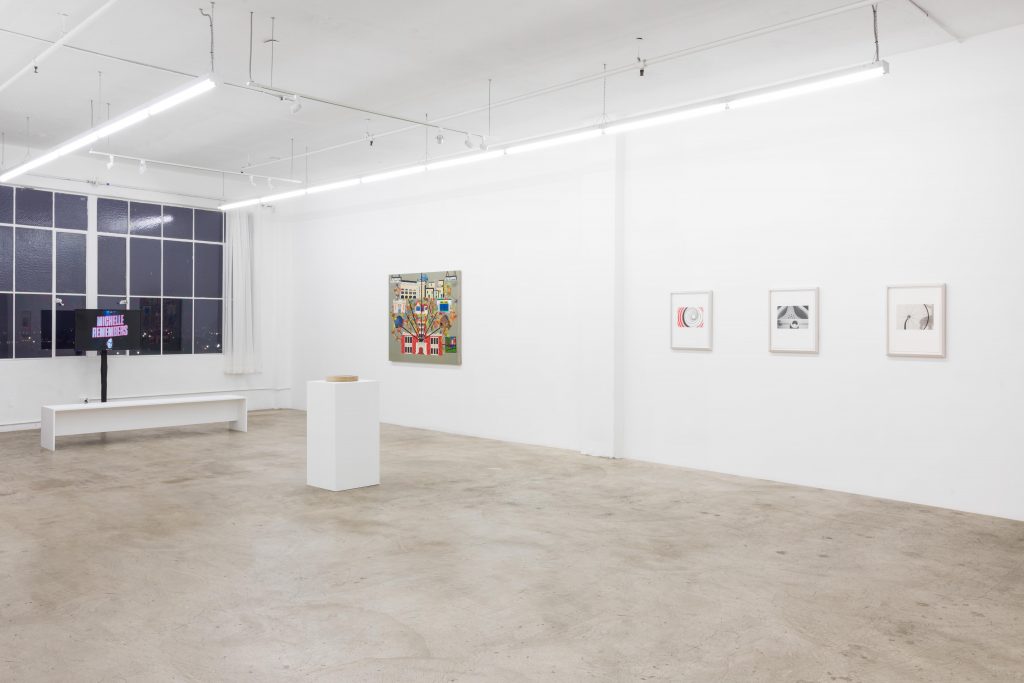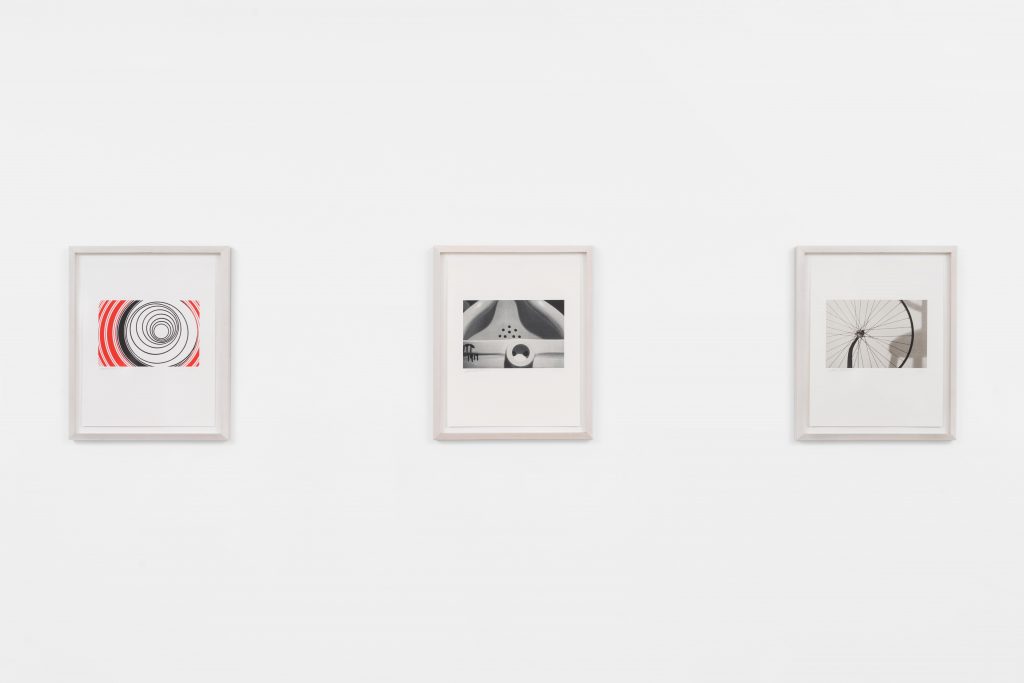 JEAN BAUDRILLARD
JEAN BAUDRILLARDSaint Clément
1987
Chromogenic color print
11.9 x 15.9 in (paper size), 9.3 x 14 in (image size) /
30.2 x 40.5 cm; (paper size), 23.5 x 35.6 cm (image size)
 JEAN BAUDRILLARD
JEAN BAUDRILLARDUntitled
Chromogenic color print
11.9 x 15.9 in (paper size), 9.3 x 14 in (image size) /
30.2 x 40.5 cm; (paper size), 23.5 x 35.6 cm (image
size)
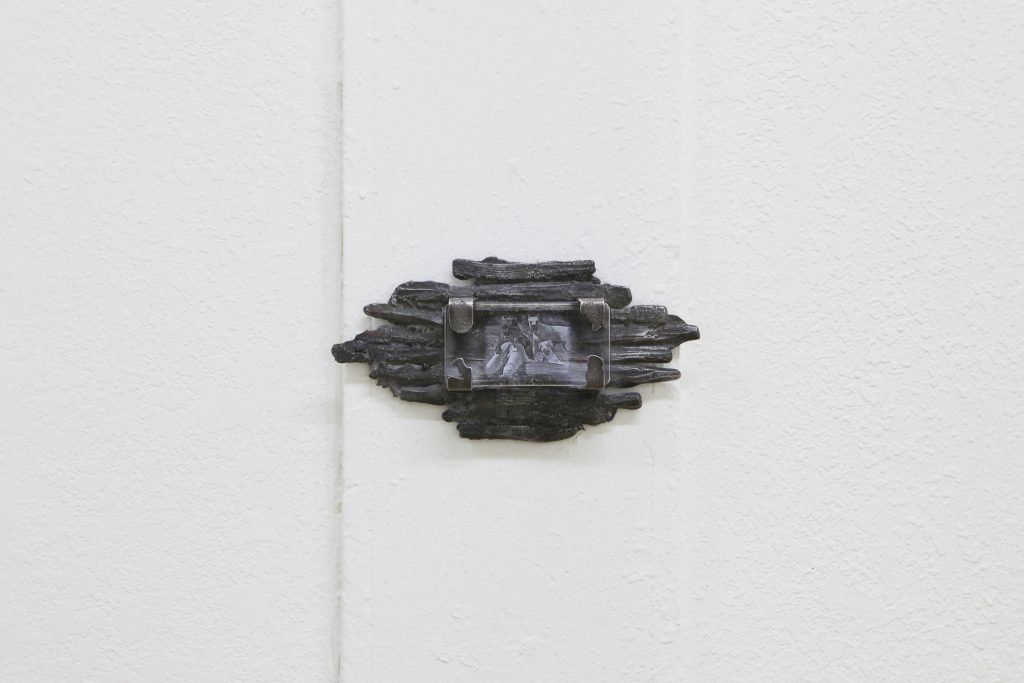 ERIN CALLA WATSON
ERIN CALLA WATSONA Dogpill
2019
Pewter, lead, liver of sulfur, laser etched crystal
5.5 x 10.5 in / 14 x 26.7 cm
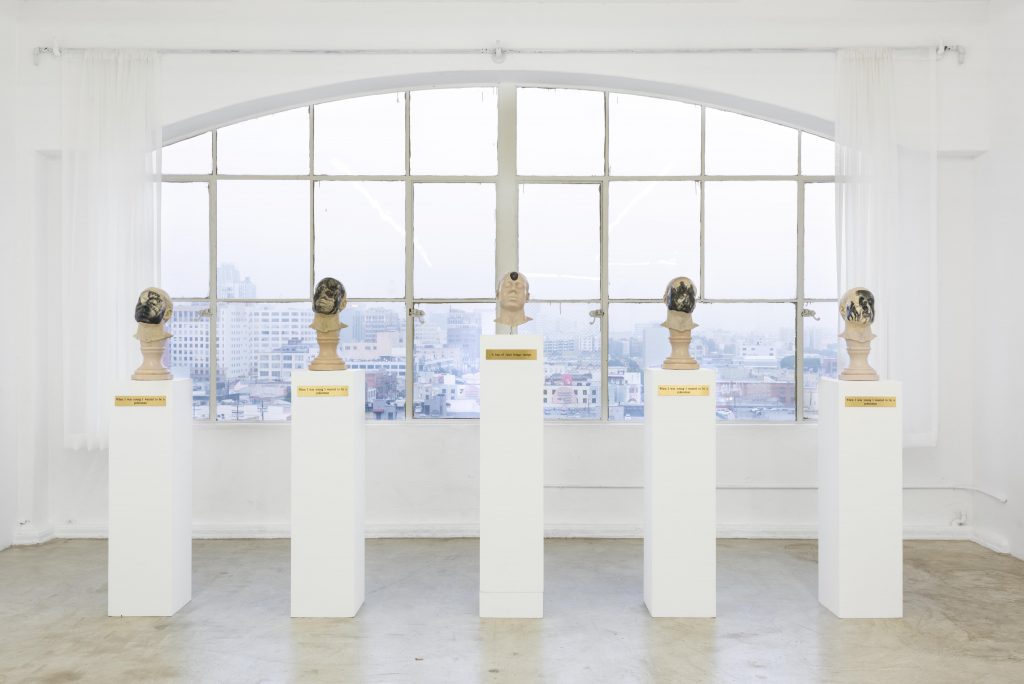 MICHAEL RICHARDS
MICHAEL RICHARDSA Loss of Faith Brings Vertigo
1994
Resin, marble dust, wood, motor, photo transfer, five
elements
Dimensions variable
 DANIEL R. SMALL
DANIEL R. SMALLAcambaro Figurines
2018
Three cast resin figurines
2.5 x 2 x 2 in / 6.3 x 5.1 x 5.1 cm
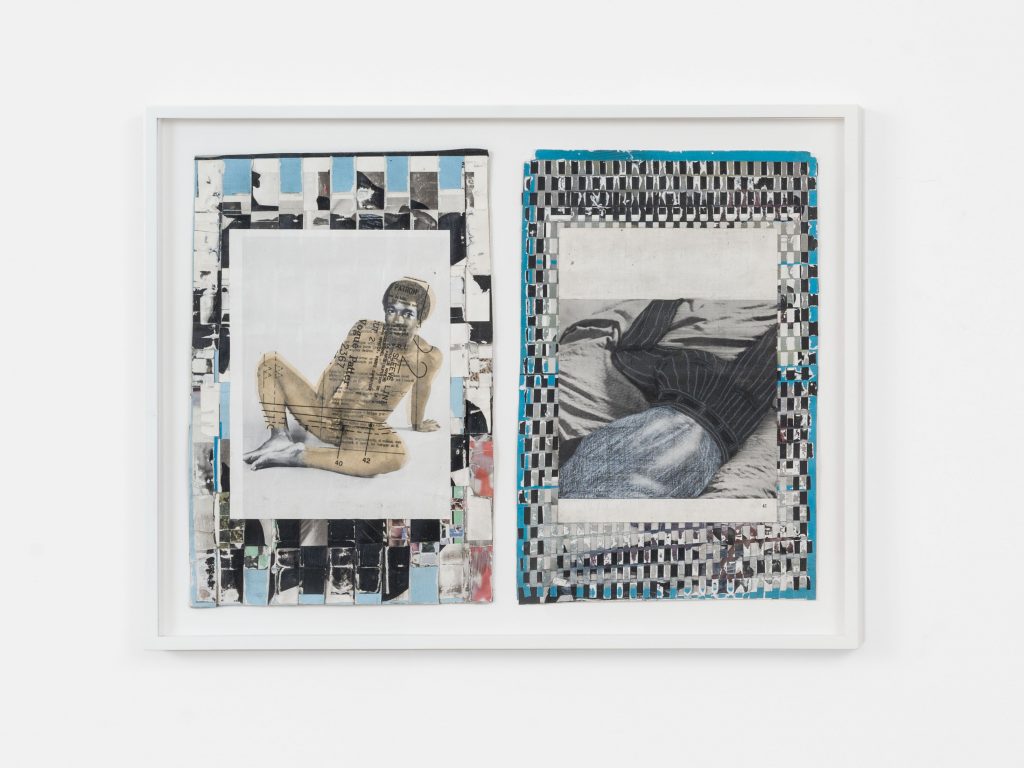 TROY MICHIE
TROY MICHIEJimmy’s Blues
2019
Cut paper, ink, clothing pattern, wax pencil and
graphite on woven paper
17 x 23.25 in / 43.2 x 59.1 cm
 TROY MICHIE
TROY MICHIEAmerica Is Woven of Many Threads #3
2019
Graphite, colored pencil, grease pencil, and
polyester thread on magazine paper
11 x 18 in / 27.94 x 45.72 cm
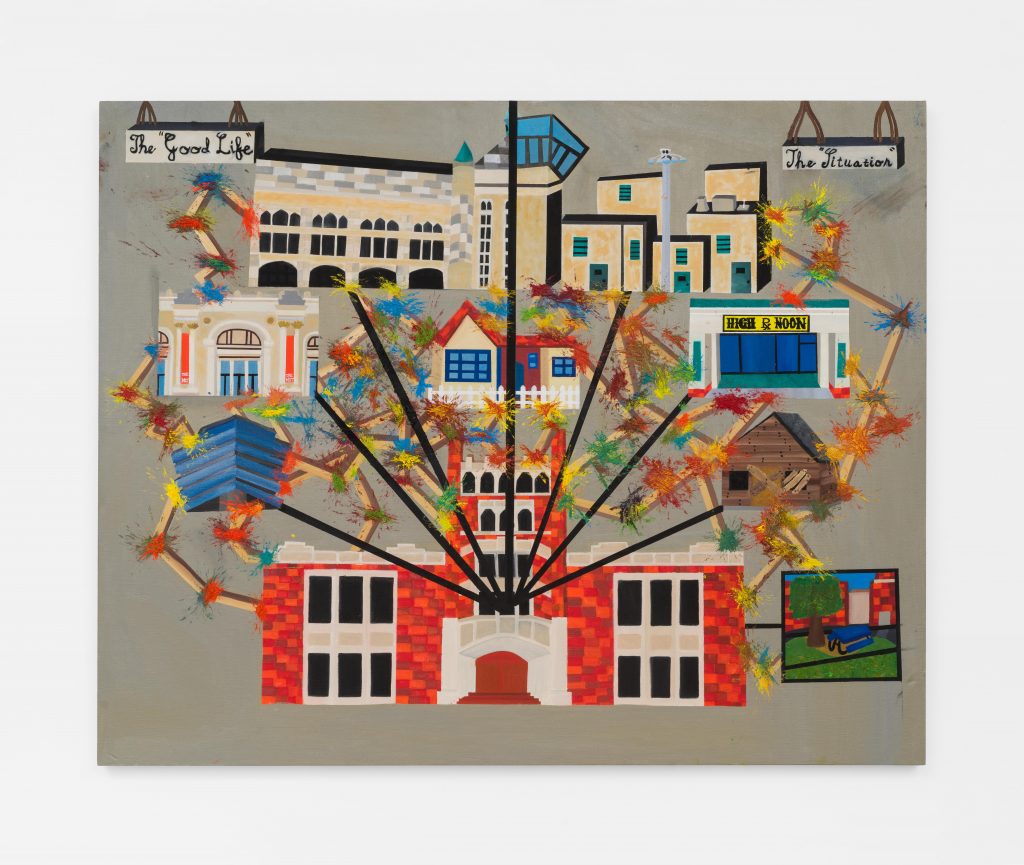 NICK ANGELO
NICK ANGELOFun House Fantasy Fear Factory Fiction (?), Act 3,
Scene 2
2019
Oil and gesso on linen over wood
48 x 60 in / 121.9 x 152.4 cm
Nick Angelo • Jean Baudrillard • Pia Borg • Martin Kippenberger • Dana Lok • Troy Michie • Amedeo Polazzo • Michael Richards • Larry Rivers • Daniel R. Small • Sturtevant • Erin Calla Watson
…art has become involved (not only from the financial point of view of the art market, but in the very management of aesthetic values) in the general process of insider trading. Art is not alone: politics, economics, the news all benefit from the same complicity and ironic resignation from their “consumers.”
“Our admiration for painting results from a long process of adaptation that has taken place over centuries and for reasons that often have nothing to do with art or the mind. Painting created its receiver. It is basically a conventional relationship” (Gombrowitz to Dubuffet).
The only question is: How can such a machine continue to operate in the midst of critical disillusion and commercial frenzy? And if it does, how long will this conjuring act last? One hundred, two hundred years? Will art have the right to a second, interminable existence, like the secret services that, as we know, haven’t had any secrets to steal or exchange for some time but who still continue to flourish in the utter superstition of their usefulness, perpetuating their own myth.
–The Conspiracy of Art, Jean Baudrillard, 1996
The Conspiracy of Art: Part II is the exhibition sequel to a solo presentation of Jean Baudrillard’s photographs staged at Château Shatto earlier this year. Part II presents an ensemble exhibition that brings artworks into concert with one another in response to the dilemmas and opportunities raised by French social theorist (and at the time, burgeoning artist) Jean Baudrillard in his 1996 essay The Conspiracy of Art. As well as artworks in direct dialogue with this text, the exhibition includes works by artists that approach conspiracy notionally and works in which conspiracy has retroactively nested in.
Art and conspiracy meet in an epistemological liaison. Both art and conspiracy actuate in the space between the empirical and the speculative, coming alive through the handling of knowledge. They overlap in this operative sense, but the relationship furthers as art itself enters into the mode of conspiracy.
By the time he crafted his 1996 essay, Baudrillard observed that everything had lurched towards aestheticization and art as a separate and transcendent phenomenon had disappeared. In this new arena of transaesthetics, art was no longer behaving like art in the Classical sense, or as it had behaved within Modernism, when it translated the “rush of unreality in reality.” The conspiracy of art, for Baudrillard, begins as its distinction dissolves and art is absorbed into a transaesthetic landscape. Without categorical boundaries and untethered from meaning, art entered into the orbital hyperspace of value. To remain afloat, it must sustain the conspiracy, or what Baudrillard more simply describes as the “conjuring act.”
The centerpiece of this exhibition is Michael Richards’ sculptural installation, A Loss of Faith Brings Vertigo (1994), which takes the form of five busts, each supported by a plinth and each plinth affixed with a single plaque. Through his practice, Richards tussled with a conspiracy of art that sits apart from Baudrillard’s allegations: that the history of Western art is enrolled in a conspiratorial relationship with its corresponding political agents, namely the colonial ambitions of Western Europe and the imperial ambitions of the United States of America. Art’s role as an ostensibly benevolent cultural force is used to underwrite malevolent political and economic agendas, creating an indivisible association that finds moving metaphor across Richards’ work. Specifically in A Loss of Faith Brings Vertigo, Richards addressed systemic antiblack racism through the racially motivated police brutality directed towards Rodney King in Los Angeles. The conspiracy on view throughout Richards’ work is that of institutionalized racial violence, tracing from the transatlantic slave trade to America’s modern day white supremacist based “justice system.”
Prescience animates contemporary readings of Richards’ practice of the 1990s. Notably, A Loss of Faith Brings Vertigo responds to policing of black communities and asks how these conditions might achieve resonance within a work of art; while additional prescience can be read in Richards’ work through the aviation imagery of feathers, pilots and particularly airplanes in relationship to the tragic circumstance of his passing. On September 11, 2001, Richards was a Lower Manhattan Cultural Council artist-in-residence in the North Tower of the World Trade Center, where he spent the night on September 10. The coordinated terrorist attacks of September 11 in which Richards passed were one of the most charged instances for conspiracy theories in history. The volume of conspiracy theories that are generated in the US around events of varying magnitudes suggests that conspiracy theories are part of the core mythology in the United States. Elsewhere in the exhibition, a screen print by Larry Rivers depicting Paul Revere, and a film composed of archival, staged and animated footage by Pia Borg, both draw on distinctly American phenomena that are advanced by the culture’s proclivity for theorizing conspiracies.
A PDF reader will be compiled alongside the exhibition, available for download once the exhibition opens on December 14, 2019.


